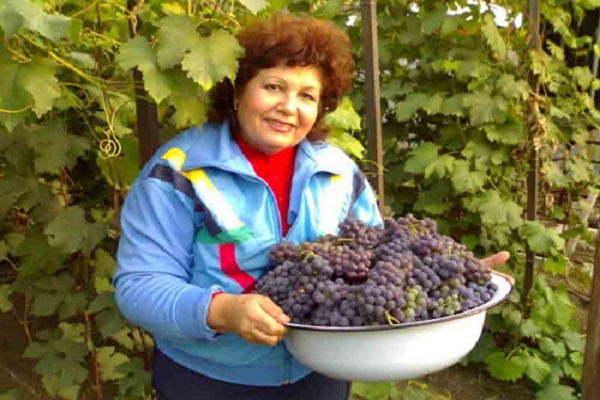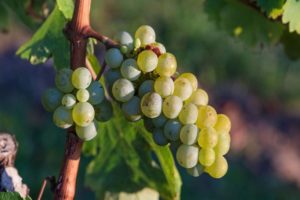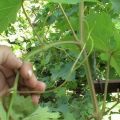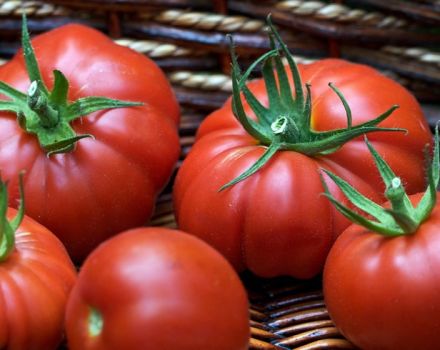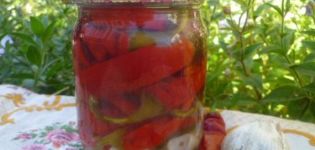Description of the Isabella grape variety and the timing of its ripening, features of planting and care, cultivation and pruning
The Isabella grape is a black variety, namesake of Queen Isabella of Spain. The plant is accepted even in harsh climatic conditions, it is frost-resistant even if it is not preserved with a special shelter. Isabella is rarely exposed to diseases, pests affect the bushes weakly. Each grower manages to grow an unpretentious variety with a high yield.
Breeding history of the variety
Breeder William Prince bred Isabella grapes by crossing the varieties Vitis Labrusk and Vitis Vinifer. Its original goal is to improve the quality of the vines and increase the fertility of the bush. The story began over 200 years ago.
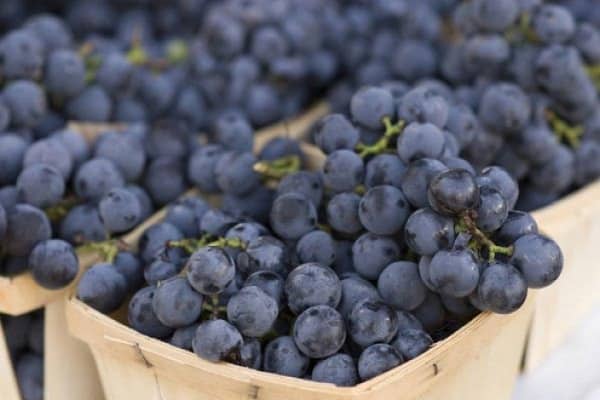
Isabella is considered an American species that is popular throughout America. Until the early 80s, grapes were grown in all states of America and European countries. Winemakers came to the conclusion that when creating wine products, Isabella is distinguished by an unpleasant rotten tone and a small amount of alcohol. All plantations were gradually cut down.
The variety has retained popularity among planters in Canada, Japan, Brazil and Portugal, where Isabella is successfully grown to this day. The neighboring countries also do not give up the opportunity to grow homemade grapes.
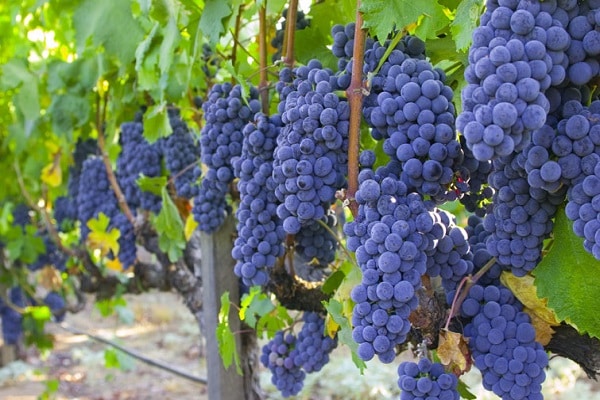
Description and features of Isabella grapes
Thanks to the detailed description of the variety, some features of the berries can be distinguished. Isabella belongs to the category of dining and technical types with a universal purpose. After all, berries are used fresh, in the manufacture of wine, juice, desserts, jams. The main characteristics are:
- berries ripen late enough;
- the plant perfectly tolerates frost, moisture, drought;
- is not affected by infectious diseases such as chlorosis and anthracnose;
- the yield is high in comparison with other varieties;
- even after freezing, the vine of the bush is restored, reproduction occurs with the help of rooted seedlings.
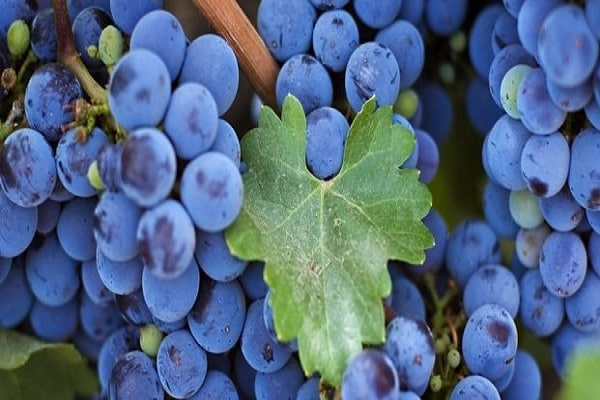
A few years after planting, a tall bush grows, on which bunches with a cone shape are formed every year. Berries of a dark shade have a round or oval shape, are densely located.
Due to the presence of a wax coating on the surface, the fruits become bluish. Despite the firmness, the skin is not difficult to separate from the pulp.
The vine develops rapidly, as a result of which the Isabella bush is used as an ornamental plant.
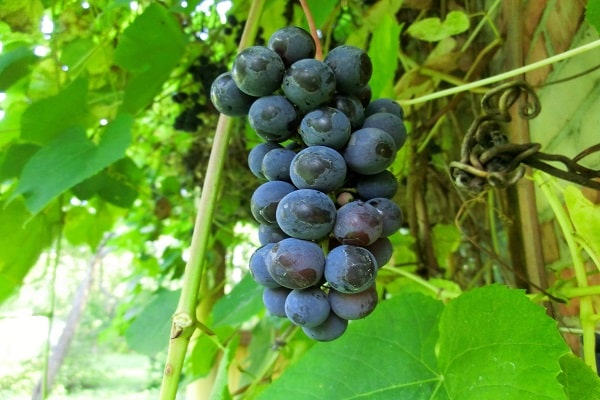
What are the varieties?
One of the ubiquitous natural American hybrids is Isabella large-fruited. The plant grows intensively. The clusters are medium-sized, have a cylindrical shape. Fertility is high, the bush is frost-resistant. The berries have a thick skin.
Through numerous experiments, an early grape variety was developed - Isabella white. The bunches are of medium density, cylinder shape. The berries are medium-sized, rounded, and have a thin skin. The variety is quite fruitful.
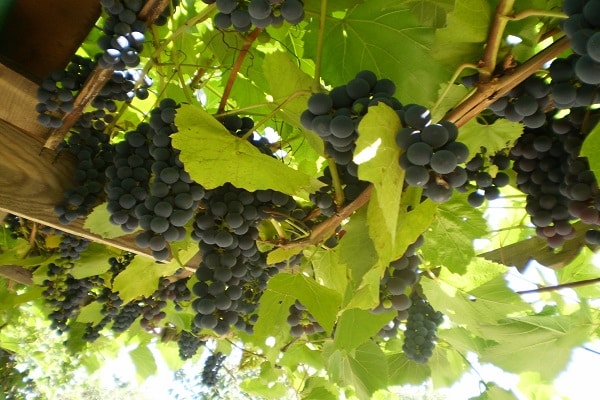
Selection of seedlings and a site for planting
When choosing young seedlings, it is recommended to consider some features:
- The best time to purchase a seedling is autumn. During this period, the seller can show the harvest and give the fruit a taste. In the spring, it is also allowed to purchase planting material, but you should not expect a quick return.
- Isabella takes root by the time of the onset of frost, begins to grow intensively in early spring.
- In order to avoid buying an infected seedling, and in order not to infect other crops in the garden, it is worth purchasing them in specialized nurseries.
- The best choice for a summer resident is a classic grape variety, because, in pursuit of new products, you can make the wrong choice.
- It is recommended to choose the elite and first category varieties. A strong and healthy vine often grows out of initially weak branches. In elite seedlings there are from 4 developed roots, the shoot reaches 25 centimeters. The first variety has a not so strong and strong root system, the shoot is up to 20 centimeters.
When a powerful root system has formed, it is time to determine the seedling in a permanent place.
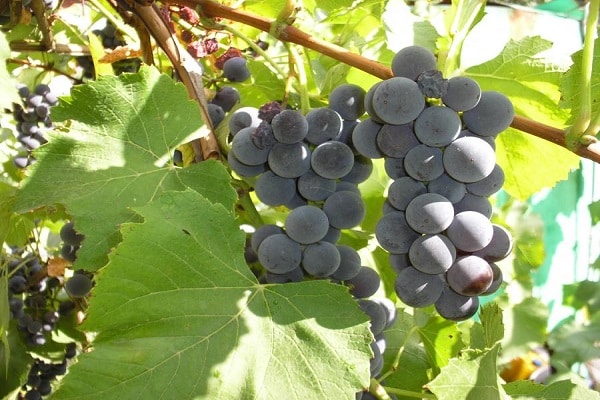
For planting grapes it is worth choosing a place according to the following criteria:
- the area should be sunny and protected from gusts of wind;
- if possible, it is recommended to plant seedlings near the walls of structures or on gentle slopes; the support for the vine can be built independently;
- if peat predominates on the site, a little river sand should be added to the soil;
- it is recommended to dilute clay soil with a drainage layer;
- sandy soil is enriched with rotted manure and compost;
- when an acid reaction occurs in the soil, the site is diluted with lime.
Important! In the soil for planting grapes, there should be no stagnant groundwater.
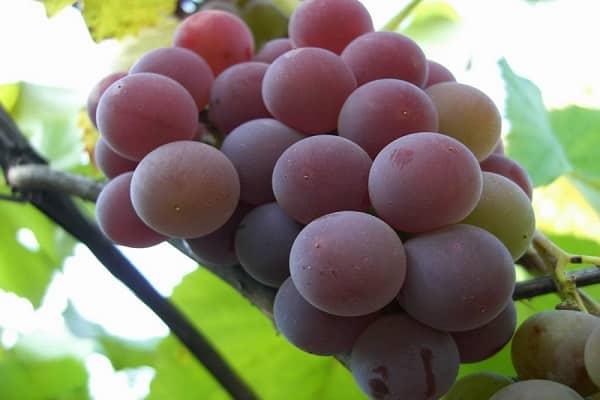
How to properly plant Isabella grapes?
For planting grapes it is recommended:
- Choose a suitable place, prepare the soil.
- Leave the purchased seedling for 24 hours in warm, settled water. Shoots are cut off only 3-5 eyes and roots by 50-100 millimeters.
- Prepare a pit for planting in advance, the depth of which should be about 50-90 centimeters, and the diameter is 80 centimeters.
- Drainage is laid at the bottom of the pit. The next layer is the excavated soil.
- A peg is installed for support.
- The next layer of potassium salt, ash and superphosphate is applied as fertilizer.
- Having covered a little earth from above, you can plant a bush.
- The root is dipped in clay gruel, buried in and tied to a peg.
- The soil around the plant is compacted tightly.
- The planted grapes must be watered abundantly. The hole is covered with peat.
It is recommended to plant seedlings at a distance of 150 centimeters from each other, between rows - at least 2 meters.
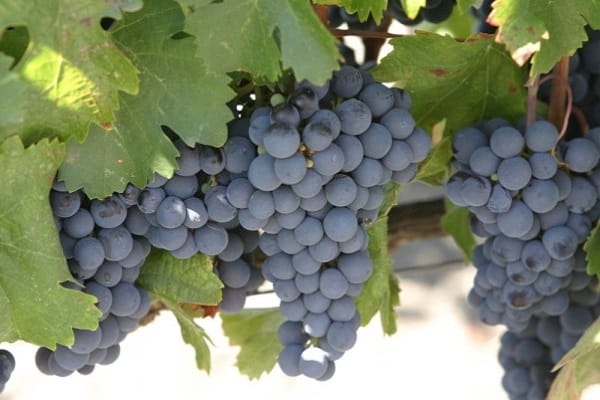
Care and growing tips
In order to get a high yield, you should adhere to the basic rules for caring for Isabella grapes:
- the soil must always be clean, free of weeds;
- around the bush, the soil must be constantly loosened, maintain the condition of the mounds;
- growing seedlings for the first 2 years is recommended to be accompanied by proper watering;
- the soil is fertilized at least three times a season. Experienced gardeners can recommend what to feed, depending on the type of soil;
- humus is introduced every 2-3 years;
- at the end of the first year of growth, it is recommended to form a support for the vine;
- before the onset of frost, young seedlings should be covered, the use of needles is allowed.
Proper care and basic requirements will help Isabella grow well and yield.
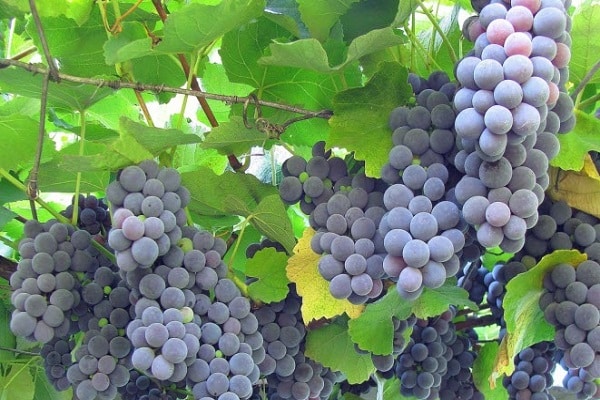
An important process is the fertilization of grapes. The most effective way is mulching, which promotes:
- preservation of soil moisture;
- improving the nutrition of the vine;
- preventing the formation of earth crusts that impede the free movement of air;
- slowing down the growth of weeds;
- protecting the roots of the bush during frost.
Humus, dry grass, compost, wood sawdust are used as mulch. Spraying with a solution is carried out using magnesium sulfate. During the entire growing season, the bush needs feeding based on liquid mineral fertilizers.
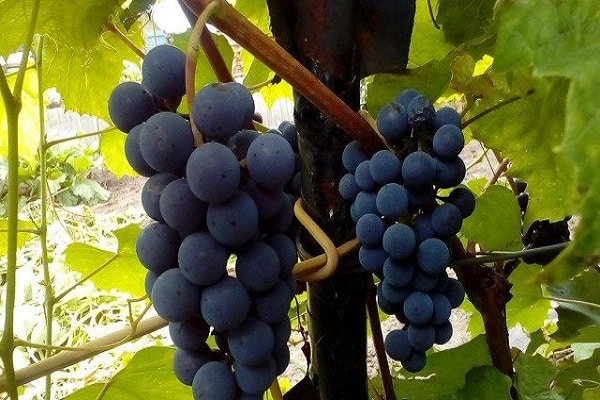
In order to prevent and combat pests and diseases, it is advised to spray shrubs with a solution of 10 teaspoons of soda and 10 tablespoons of salt per 10 liters of purified water.
To process the leaves, gardeners prepare a solution based on slaked lime. For cooking, it is enough to dilute 1 kilogram of quicklime with 3 liters of water. After the quenching process, add 7 liters of water and mix thoroughly.
Leaves can be processed with a brush.
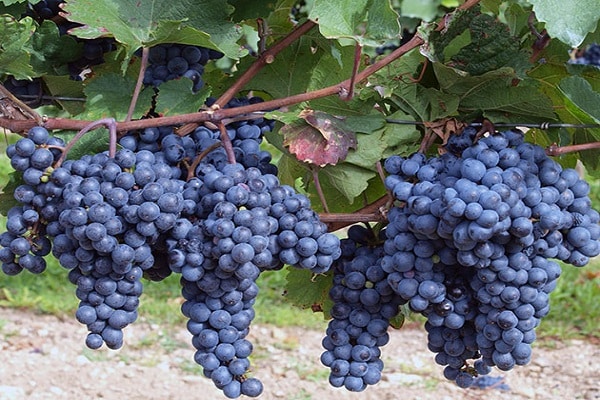
Timing and pruning procedure
During the summer, the vine often grows, it is required to cut the bush. It is recommended to use a special tool - secateurs. The pruning process is often carried out in the fall or spring. Autumn pruning should be done when the leaves are completely shed by the bush, when the grapes are preparing for wintering. The procedure should be completed before the first frosts. Sick and old parts must be removed without fail.
Fundamental rules, how to properly prune a grape bush:
- on young bushes, it is necessary to leave healthy shoots in an amount of no more than 8;
- pruning is recommended to be done carefully so as not to harm healthy parts of the grapes;
- stiff stepsons are removed partially, green ones - completely;
- the tip must also be removed, which promotes lateral growth rather than in height;
- trimming is carried out at right angles, the cuts must remain smooth;
- experienced gardeners recommend thinning bunches and leaves, a large number of which contributes to a decrease in yield.
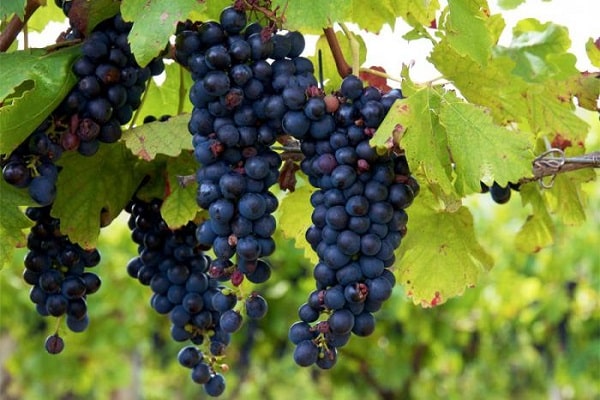
Summer pruning of shrubs is carried out to correct growth. It is important to keep an eye on a fruitful and empty vine so as not to cut off excess.
Pruning in the summer allows gardeners to carry out plant prophylaxis for better transfer of the active growing season.
Summer pruning features:
- In order to distribute the load in an even way, you should break off the young growth in early June. It is recommended to tie up a fruitful vine during this period. Thanks to this, the replacement, for the next year's yield, will be laid correctly.
- The flowering process ends in July, it is during this period that stepchildren should be removed, spraying and fertilizing should be carried out. This contributes to high yields.
- In August, young shoots are minted by removing the upper parts of the root in order to compact the lower part of the root system.
- Antennae can be removed every day - they serve as a mount.

Reproduction methods
Propagation by cuttings is quite common in horticulture. When carrying out autumn pruning, cuttings are usually harvested for planting. Part of an annual shoot is cut with a diameter of 7-10 millimeters and a length of 150-200 centimeters.
Experienced gardeners distinguish 2 ways of harvesting:
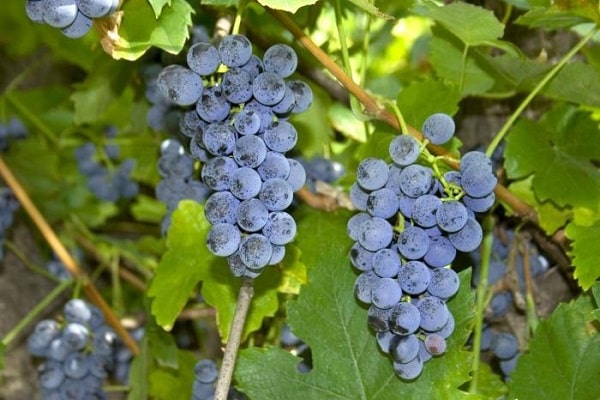
- The leaves from the prepared vines are removed, the vine is twisted into a ring, sent for storage in a dark, cool place. Additional processing is not required.Cuttings are cut with the onset of spring, it is recommended to leave 5-6 eyes on them. On days 14-21, they are placed in water - in the warmth, under the sun's rays, until the roots appear. Then the cuttings should be rooted with mineral fertilizers in specially prepared soil.
- The cut vine is cut into small pieces - 20-40 centimeters each. The upper cut is located 2-3 centimeters from the eyes. The material is soaked in a solution based on ferrous sulfate for 60-120 minutes and left in a cool place until spring comes.
It is recommended to plant prepared cuttings in the first days of the last spring month. With proper planting and care, in the future, a high yield is guaranteed.
